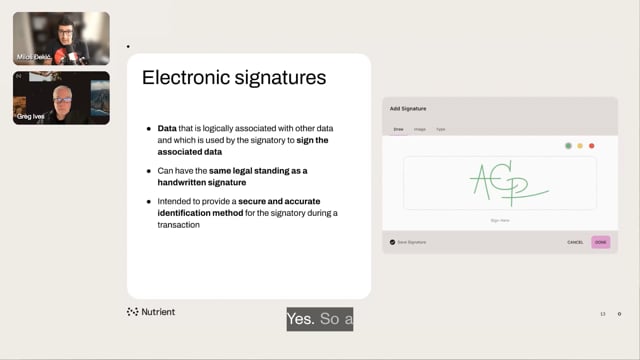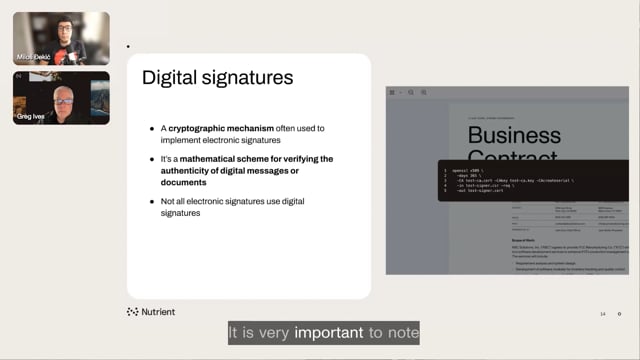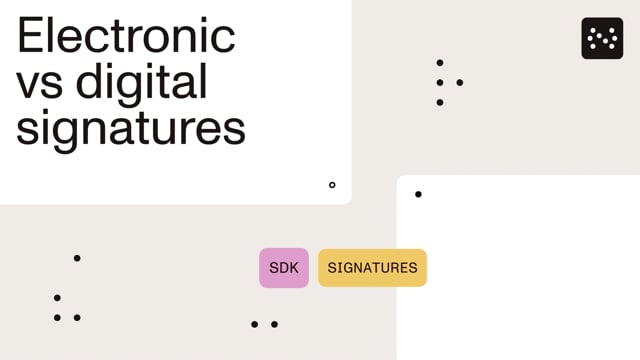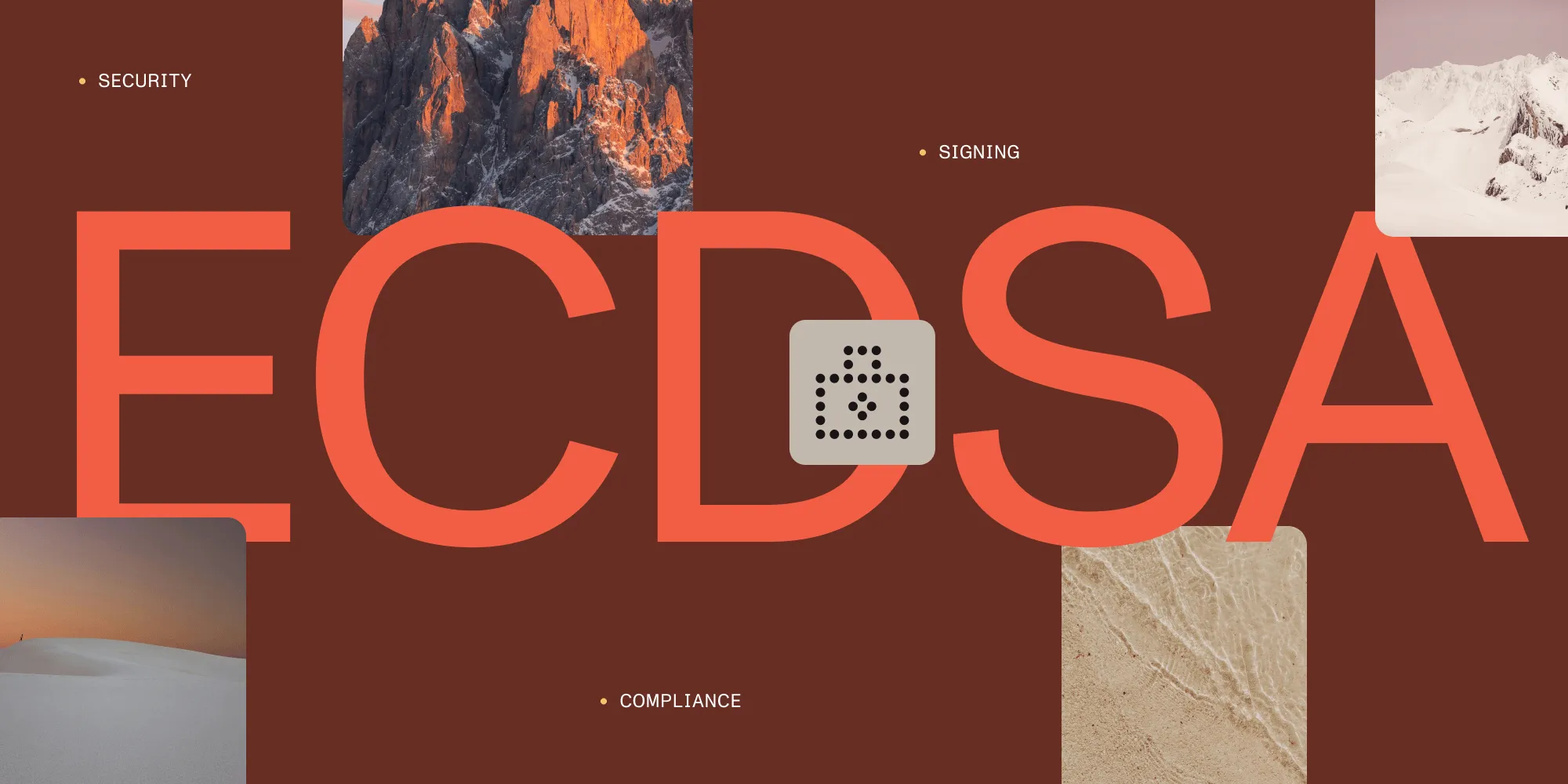The difference between digital and electronic signatures
Table of contents

In a recent webinar, our two key speakers, Greg Ives and Miloš Đekić, covered the distinction between digital signatures and electronic signatures.

Simply put, an electronic signature is data utilized for signing digital documents. A digital signature adds additional data to an electronic signature created by using a cryptographic mechanism, which is a mathematical scheme for verifying the authenticity of digital messages or documents. This provides a heightened level of assurance and confirmation of identity in electronically signed documents. It’s very important to note that not all electronic signatures will contain digital signatures.
The intricacies of digital signatures

Here, the focus shifts toward the intricacies of digital signatures, where a key player is the role of trusted entities. These entities can guarantee the integrity of the signed documents or the identity of the signing parties by providing digital certificates and methods for creating and validating digital signatures.
A significant point that surfaced throughout the presentation was the variable legal definitions for signing across different geographical areas. Đekić covered the differing regulations and definitions concerning electronic signatures in several countries, primarily Canada, the U.S., and the EU.
Categories of electronic signatures

In the EU, for example, the law recognizes three categories of electronic signatures:
- Simple electronic signatures
- Advanced electronic signatures
- Qualified electronic signatures
Each category provides varying levels of security and identity verification, with an emphasis on the signer’s intent — a crucial factor in a court of law.
As technology evolves, digital signatures are set to expand beyond the document space, potentially venturing into areas like code versioning and document versioning. This evolution points toward an anticipated future with technical standards for verifying a document’s origin, further underscoring the importance of digital signatures in ensuring authenticity and integrity.
In conclusion, the session emphasized the nuances between electronic and digital signatures and the impact of technological advancement on the future of digital signing. For more information about signatures and signing, refer to our other blog posts on the topic, or check out our signature guides.
Want to watch the full webinar? Check it out below.








